
Do you have a question about the Invacare Lynx L-3 and is the answer not in the manual?
| Maximum Speed | 5 mph |
|---|---|
| Top Speed | 5 mph |
| Turning Radius | 33" |
| Overall Length | 39" |
| Overall Width | 21" |
| Seat Width | 17" |
| Battery | 12V 12AH |
| Ground Clearance | 2.25" |
| Drive System | 24V DC motor, sealed mini transaxle |
| Brakes | Electromagnetic |
| Type | 3-wheel scooter |
| Weight Capacity | 300 lbs |
| Seat Depth | 16 inches |
| Battery Type | Sealed Lead Acid |
| Battery Charger | 2 amp, Off-board |
| Charger Type | Off-board, 2A |
| Tire Type | Solid, Flat-Free |
Information on vehicle transport and restraints for powered scooters.
Guidelines for the safe use and importance of the seat positioning strap.
Procedures for qualified technicians regarding setup and service.
Guidelines for safe operation, including connector checks and turning.
Instructions for checking electrical connections for security.
Proper use of grounding plugs and extension cords for safety.
Recommendations for battery type and reading charger information.
Information on ISO 7176 'Rain Test' and precautions for water exposure.
Invacare's stance against using scooters for weight training.
Specifies the maximum weight capacity for the scooter.
Guidelines for maintaining balance and safe operation.
Safety precautions and procedures for navigating stairways.
Safety warnings regarding the use of escalators with scooters.
Checklists for initial, weekly, monthly, and periodic safety inspections.
Recommended routine maintenance tasks for the scooter.
Common symptoms, probable causes, and solutions for scooter issues.
List of error codes indicated by scooter service lights and their meanings.
Procedure for resetting the scooter's circuit breaker.
Description of the scooter's control panel components and functions.
Step-by-step guide to operating the powered scooter.
Instructions for using the brake release lever for drive and push modes.
Procedure for removing and installing the scooter seat assembly.
Steps to adjust the height of the scooter seat.
Instructions for swiveling the seat to the desired position.
Guide on adjusting the width of the scooter armrests.
Procedure for replacing worn or damaged armrest pads.
Steps to adjust the angle and lock the tiller assembly.
Procedure for removing and installing the drive wheels.
Procedure for removing and installing the front wheel.
Specifies the recommended type and voltage of batteries for the scooter.
Instructions for removing and installing the battery box.
Detailed procedure for removing and installing the scooter batteries.
Guidelines and steps for safely charging the scooter batteries.
Procedures for disassembling and assembling the scooter for transport.
Instructions for installing and removing the accessory tube.
Procedure for attaching and detaching the crutch/cane holder.
Instructions for installing and removing the safety flag.
Procedures for installing, removing, and using the walker holder.
Procedure for installing and removing the rear mounted basket.


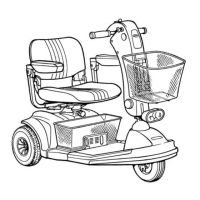
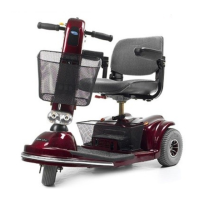


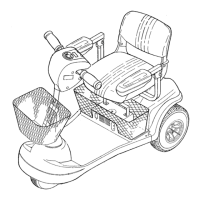


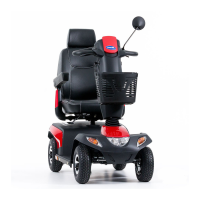
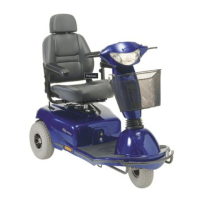
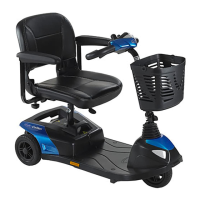
